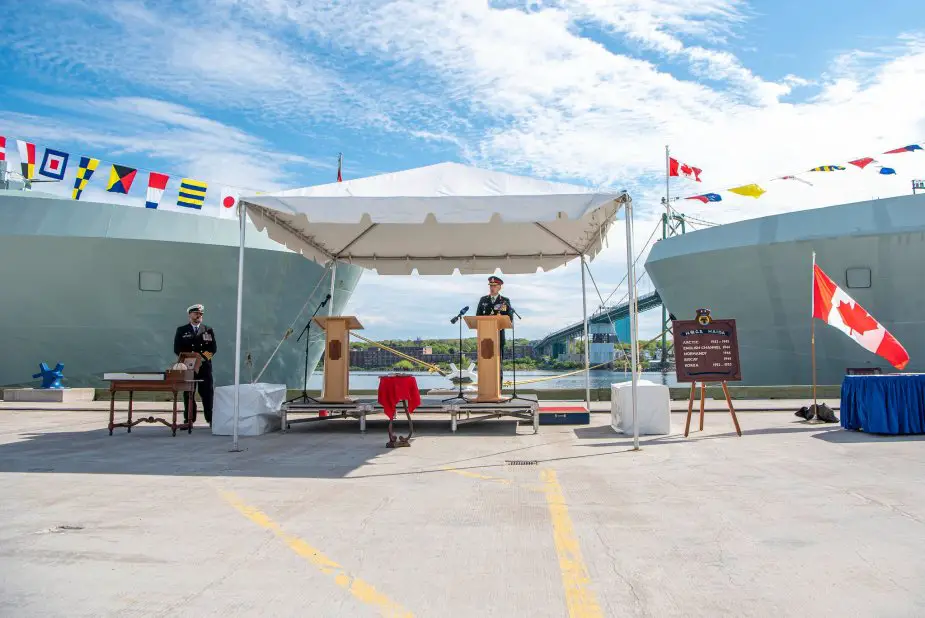According to a PR published by Halifax Shipyard on May 29, 2022, shipbuilders, members of the Royal Canadian Navy, the federal and provincial governments as well as the families of two Canadian naval heroes marked another shipbuilding milestone with the official naming of HMCS Margaret Brooke and HMCS Max Bernays.
Follow Navy Recognition on Google News at this link
 Royal Canadian Navy's Offshore Patrol Vessels (Picture source: RCN)
Royal Canadian Navy's Offshore Patrol Vessels (Picture source: RCN)
Both ships are part of the fleet of six (6) Arctic and Offshore Patrol Ships (AOPS) being delivered to the Royal Canadian Navy as part of the National Shipbuilding Strategy.
The Arctic and Offshore Patrol Ships are large, ice-capable ships, more than 100 meters long, and designed to conduct a variety of missions in Canada’s waters, including in the Arctic. The vessels will be capable of conducting armed sea-borne surveillance, providing government situational awareness of activities and events in these regions.
They will also be able to cooperate with partners in the Canadian Armed Forces and other government departments to assert and enforce Canadian sovereignty, when and where necessary.
The naming of a ship is steeped in history and naval tradition. Dating back centuries, this ritual is believed to bring good luck and safe travel to the vessel and crew.
About HMCS Max Bernays
Max Bernays (AOPV 432) will be the third Harry DeWolf-class offshore patrol vessel for the Royal Canadian Navy. The class was derived from the Arctic Offshore Patrol Ship project as part of the National Shipbuilding Procurement Strategy and is primarily designed for the patrol and support of Canada's Arctic regions.
The vessel will be powered by a diesel-electric system composed of four 3.6-megawatt (4,800 hp) generators and two diesel engines rated at 4.5 megawatts (6,000 hp) driving two shafts.
Max Bernays will be capable of 17 knots (31 km/h; 20 mph) in open water and 3 knots (5.6 km/h; 3.5 mph) while icebreaking in new year ice of 1-meter (3 ft 3 in) thickness.



